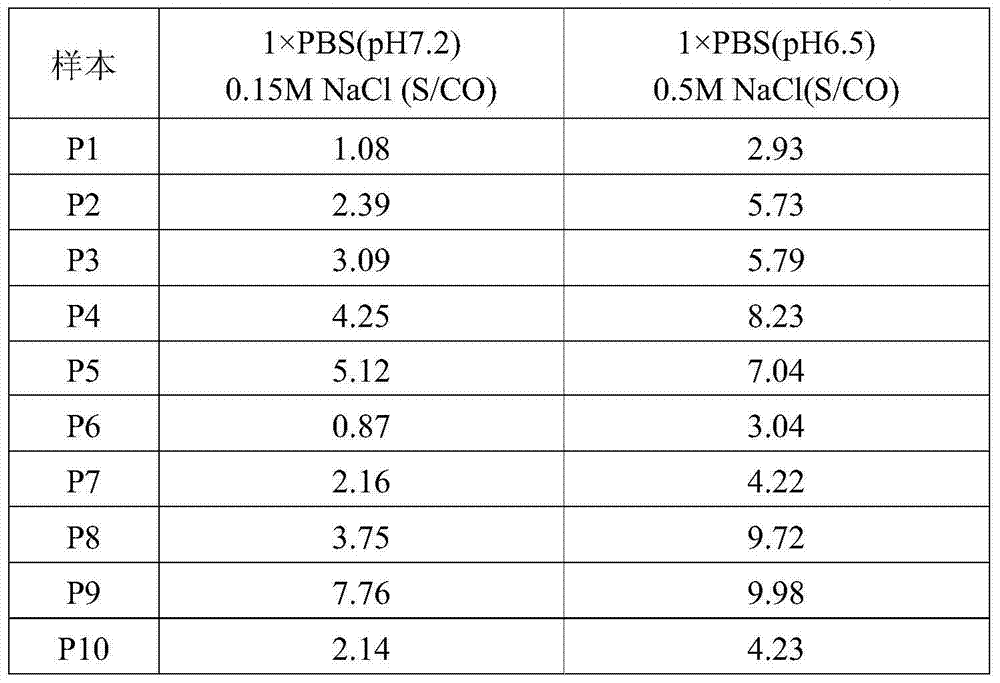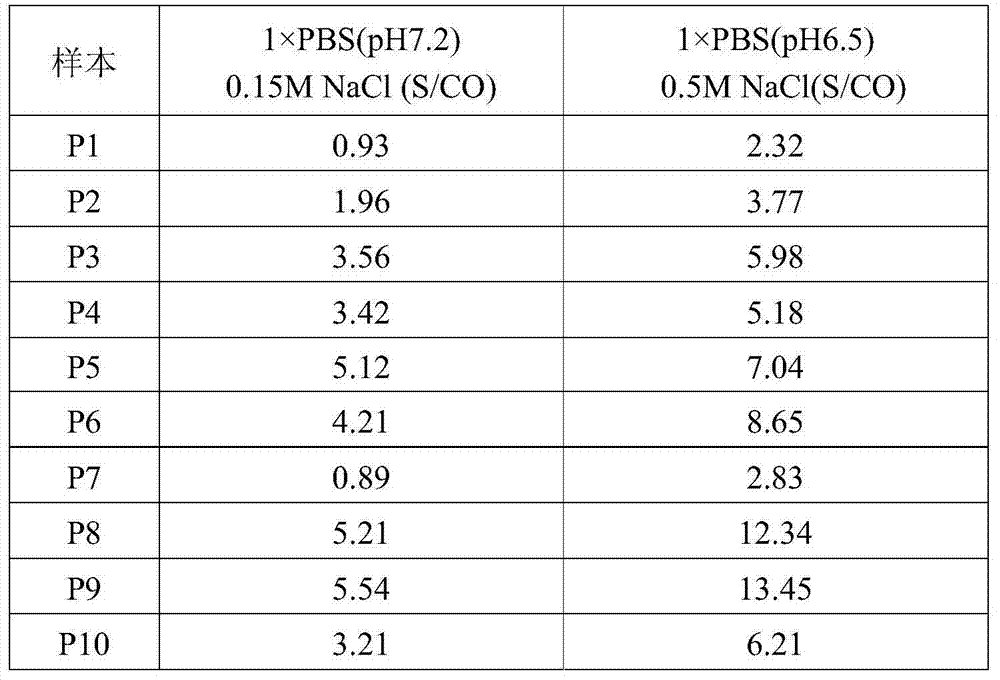Kit for processing antigen-antibody immune complex in serum or plasma sample and application of kit
An immune complex and antigen-antibody technology, which is applied in the field of sample processing kits and antigen-antibody immune complex processing kits, can solve problems such as blockage of plate washer, inapplicability to daily detection, and aging of plate washer pipelines. Widely applicable, high clinical application value, and the effect of improving detection sensitivity
- Summary
- Abstract
- Description
- Claims
- Application Information
AI Technical Summary
Problems solved by technology
Method used
Image
Examples
Embodiment 1
[0022] Example 1: Research and preparation of immune complex sample treatment solution
[0023] In this example, the processing methods refer to the previous processing methods of the applicant in the patent publication No. CN101832999A, that is, 100ul samples plus 50ul prepared reagents are treated at 56°C for 30min, and then each relevant detection kit is used. to test.
[0024] (1) Selection of buffer
[0025] The binding reaction between antigen and antibody is reversible. Antigen-antibody complexes can also be dissociated under a certain external environment such as low pH, high concentration of salt, and repeated freezing and thawing. Under this condition, the dissociated antigen and antibody still maintain the original structure, activity and specificity. Among them, changing pH and ionic strength is the most commonly used method to promote dissociation.
[0026] In view of the above principles, this embodiment first adjusted the pH value and ionic strength, and foun...
Embodiment 2
[0065] Example 2 Determination of the Best Treatment Mode of the Antigen-Antibody Immune Complex Treatment Kit
[0066] (1) Preparation of antigen-antibody immune complex
[0067] Referring to the literature, HAV (hepatitis A virus) immune complex was prepared to verify the dissociation effect of the antigen-antibody immune complex treatment kit prepared in Example 1 and the optimal time and temperature for dissociation.
[0068] Add a certain titer of HAV antiserum to a certain concentration of HAV antigen, detect it with a HAV antigen detection kit (self-made kit) before adding and after neutralization, and add it to the HAV antigen with a concentration of 160EU / ml For the antiserum with a titer of 20U / ml, the OD value detected by the HAV antigen kit before adding the antiserum was 0.821, and the OD value after adding the 20U / ml antiserum was 0.087.
[0069] (2) Determination of the best treatment method
[0070] The antigen-antibody immune complex processing kit was used ...
Embodiment 3
[0075] Embodiment 3 The treatment agent of the present invention can also achieve dissociation effect as an added component of the sample diluent
[0076] Through the comparative study in Example 2, it is found that the dissociation is caused by the increase of the reaction temperature or the prolongation of the reaction time, until reaching or approaching the plateau. Based on this, whether the degree of dissociation changes with the addition amount and time of the antigen-antibody immune complex treatment reagent was further verified in this example, and the reaction temperature was determined to be 37°C. The results are shown in Table 9.
[0077] Table 9 Comparative study of treatment agent addition ratio and treatment time
[0078]
[0079]The above results show that 100ul sample + 50ul treatment agent treatment at 37°C for 15 minutes is still the best treatment method (because of its short reaction time and easy operation); but at 37°C 100ul sample + 10ul treatment age...
PUM
 Login to View More
Login to View More Abstract
Description
Claims
Application Information
 Login to View More
Login to View More - R&D
- Intellectual Property
- Life Sciences
- Materials
- Tech Scout
- Unparalleled Data Quality
- Higher Quality Content
- 60% Fewer Hallucinations
Browse by: Latest US Patents, China's latest patents, Technical Efficacy Thesaurus, Application Domain, Technology Topic, Popular Technical Reports.
© 2025 PatSnap. All rights reserved.Legal|Privacy policy|Modern Slavery Act Transparency Statement|Sitemap|About US| Contact US: help@patsnap.com



